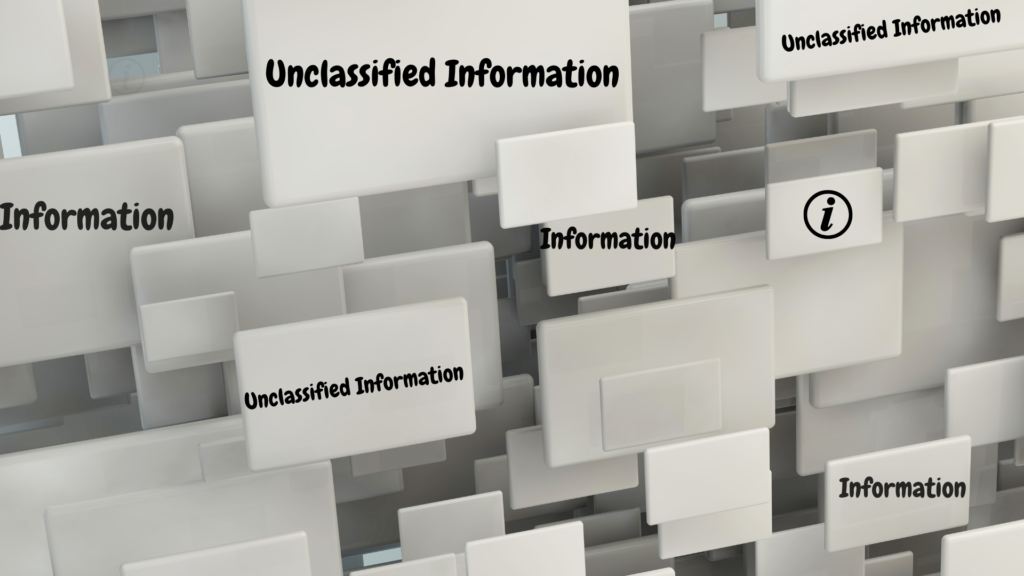Controlled Unclassified Information (CUI) is a term often misunderstood by many people. If you’ve ever come across this term while working on a government contract, dealing with sensitive data, or managing security protocols, you may have wondered: What exactly is CUI?
This comprehensive guide will break it all down for you in clear, simple language. We’ll explore what CUI is, why it matters, and which statements about CUI are true. Whether you’re a federal contractor, private sector worker, or just someone interested in data security, this article will give you everything you need to know.
What is Controlled Unclassified Information (CUI)?
Controlled Unclassified Information (CUI) is any information that isn’t classified (e.g., secret or top secret) but still requires safeguarding because of its sensitive nature. CUI plays an essential role in protecting sensitive information that could harm national security, privacy, or public trust if mishandled.
CUI exists in various forms, including physical documents, emails, digital files, and even conversations. Some examples include:
- Personally Identifiable Information (PII) like Social Security numbers or addresses.
- Financial data related to contracts or budgeting.
- Health information protected under laws like HIPAA.
- Technical designs and export-controlled research.
The goal of CUI is to standardize how sensitive information is handled across different organizations, ensuring consistent protections and reducing risks of misuse.

Why is CUI Important?
CUI exists because there’s a critical need to protect unclassified yet sensitive information. Without standardized safeguards, this data would be at risk of theft, misuse, or exposure, leading to a range of consequences, including:
- National Security Risks: Sensitive but unclassified data could provide adversaries with crucial information.
- Identity Theft: Exposure of personal data can harm individuals.
- Economic Losses: Breaches of sensitive financial data could result in fraud or loss of competitive advantage.
- Loss of Trust: Mishandling CUI erodes public and partner trust in agencies and organizations.
By managing CUI properly, organizations reduce these risks and uphold accountability in the handling of sensitive information.
Key Characteristics of Controlled Unclassified Information
Understanding the features of CUI can help you better grasp its significance. Let’s explore the main characteristics:
Protected but Not Classified
Unlike classified information, which has strict levels such as “confidential,” “secret,” or “top secret,” CUI is unclassified. However, it still requires protection based on federal guidelines.
Clearly Defined Categories
CUI is divided into categories to clarify the type of data and its handling requirements. Some of the most common categories include:
- Critical Infrastructure Information (CUI//SP-CriticalInfrastructure)
- Export-Controlled Information (CUI//SP-ExportControl)
- Privacy Information (CUI//SP-Privacy)
Each category ensures the information is handled according to its specific needs.
Governed by Federal Policies
CUI is subject to federal regulations, including Executive Order 13556, which established the CUI program in 2010. This executive order mandates clear rules for identifying, safeguarding, and sharing CUI.
Shared on a Need-to-Know Basis
CUI is accessible only to authorized individuals or organizations that have a legitimate purpose for handling it.

How Does Controlled Unclassified Information Differ from Classified Information?
While both CUI and classified information are sensitive, there are key differences:
| Aspect | CUI | Classified Information |
| Sensitivity Level | Unclassified but sensitive | Confidential, secret, or top secret |
| Markings | Labeled “CUI” with category markings | Marked based on classification level |
| Purpose | Protects non-classified information | Protects national security information |
| Handling Rules | Governed by Executive Order 13556 | Governed by strict classification laws |
Understanding these distinctions is crucial for avoiding confusion and ensuring compliance when handling sensitive materials.
How to Handle Controlled Unclassified Information Properly
Handling CUI isn’t complicated, but it does require attention to detail. Here’s a step-by-step guide:
1. Identify and Mark CUI Correctly
All CUI materials should be clearly marked with the appropriate labels to ensure proper handling. This includes physical documents and electronic files.
Use Secure Storage
CUI must be stored in secure locations, such as locked filing cabinets, password-protected systems, or encrypted storage solutions.
Share Information Securely
Use approved communication channels like encrypted emails, secure file transfers, or designated portals to share CUI. Never send CUI over public or unsecured networks.
Limit Access
Restrict access to those with proper authorization. Always verify that recipients have a legitimate reason to view or use CUI.
Follow Cybersecurity Best Practices
Organizations handling CUI should implement robust cybersecurity measures in line with NIST Special Publication 800-171. These measures include:
- Multifactor authentication.
- Regular system audits.
- Strong password policies.
Which of the Following is True of Controlled Unclassified Information?
Here are a few facts to help you understand what’s true about CUI:
- CUI Must Be Clearly Marked: All CUI materials need proper labels to ensure they’re handled correctly.
- CUI Requires Secure Handling: Even though it’s not classified, mishandling CUI can result in serious consequences.
- CUI Isn’t the Same as Classified Information: While sensitive, CUI is not subject to the same strict regulations as classified materials.
- CUI Compliance is Federally Mandated: Federal agencies and contractors are legally required to follow CUI handling and safeguarding protocols.

Common Mistakes to Avoid When Handling CUI
Mistakes in handling CUI can have costly consequences. Here are common pitfalls to avoid:
Failing to Mark CUI Properly
Without proper markings, individuals may mishandle the data unknowingly.
Sharing CUI Through Unsecure Channels
Sending CUI over public Wi-Fi or unsecured platforms puts sensitive data at risk.
Neglecting Cybersecurity Measures
Outdated systems or weak passwords make organizations vulnerable to breaches.
Providing Unauthorized Access
Always verify that individuals accessing CUI have proper authorization.
Conclusion
Controlled Unclassified Information bridges the gap between classified information and public records. While it doesn’t have the same level of sensitivity as classified materials, it still demands careful protection to prevent security breaches, identity theft, and other risks.
By understanding the key characteristics of CUI, federal regulations, and best practices for handling it, you can ensure compliance while protecting sensitive data. Whether you’re a government employee, contractor, or private sector professional, safeguarding CUI is a shared responsibility that benefits everyone.
FAQs
1. What happens if someone mishandles CUI?
Mishandling CUI can lead to legal penalties, loss of contracts, security breaches, and reputational damage for the organization.
2. Is CUI the same as FOUO?
No. “For Official Use Only” (FOUO) was a previous designation that has been replaced by the CUI framework to provide a more standardized approach.
3. Can CUI be stored on personal devices?
CUI should only be stored on approved and secure systems, not personal devices, unless explicitly authorized and protected by cybersecurity measures.
4. How is CUI marked?
CUI is marked with clear labels like “CUI” and may include additional category markings (e.g., CUI//SP-Privacy).
5. Do private companies need to follow CUI guidelines?
Yes, private companies working as federal contractors or partners must comply with CUI regulations, especially when handling government data.
By following these guidelines, you can ensure that CUI is handled securely and responsibly. Understanding and adhering to CUI rules is essential for protecting sensitive information and upholding trust in our systems.
